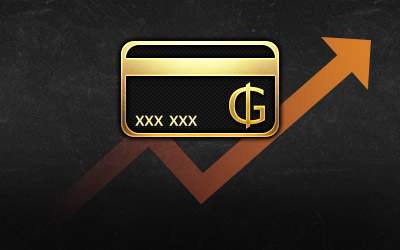Buying a boat can be an exciting and rewarding experience, especially if you are looking to enjoy the open water with family and friends. If you are considering purchasing a boat from a private seller, there are several steps you need to take to ensure a smooth and successful transaction. In this article, we will outline the key steps involved in buying a boat from a private seller.
I. Determine Your Budget and Research the Market
Before you start looking for a boat to purchase, it’s essential to determine your budget and research the market. Boat prices can vary widely depending on the type, age, and condition of the vessel. Some factors that can impact the price of a boat include the size, age, condition, and location of the boat.

Once you have a budget in mind, research the market to get an idea of the prices of boats that fit your requirements. This can help you avoid overpaying for a boat and ensure you get the best value for your money.
II. Search for Boats and Contact Sellers
Once you have an idea of the type of boat you want and the price range you’re comfortable with, it’s time to start searching for boats and contacting sellers. There are several ways to search for boats, including:
- Online classifieds websites such as Craigslist, Boat Trader, or YachtWorld
- Local boating clubs or marinas
- Boat shows or events
When contacting sellers, be sure to ask detailed questions about the boat’s history, condition, and any upgrades or modifications made to the boat. Request recent photos or videos of the boat to get a better idea of its current condition.
III. Inspect the Boat
Once you have identified a boat that meets your requirements, the next step is to inspect the boat thoroughly. This involves several steps, including:
-
Conduct a visual inspection
Start by conducting a visual inspection of the boat. Look for any signs of damage, wear and tear, or other issues that may affect the boat’s value or performance.
-
Conduct a mechanical inspection
Next, conduct a mechanical inspection of the boat. Check the engine, electrical systems, and other mechanical components for any issues or vibrations. Check the oil, coolant, and other fluid levels.
-
Look for signs of previous repairs or modifications
Check for any signs of previous repairs or modifications to the boat. Look for patchwork or mismatched paint, indicating repairs may have been made. Check for any aftermarket parts or accessories, which could affect the boat’s value or performance.
-
Verify all equipment and accessories are in good working condition
Check all equipment and accessories, such as navigational equipment, safety equipment, and entertainment systems. Ensure they are in good working condition and up-to-date with current regulations.
IV. Negotiating and Making an Offer
After inspecting the boat and determining it is the right fit, the next step is to negotiate and make an offer. This involves several steps, including:
-
Determine your negotiating strategy
Before making an offer, determine your negotiating strategy. Consider the market values you researched and the condition of the boat. Decide on your maximum offer and your desired final price.
-
Make an initial offer
Make an initial offer based on your research and negotiation strategy. Be prepared for counter offers and negotiations.
-
Consider counter offers and negotiate the final price
Consider any counter offers and negotiate the final price. Consider factors such as the condition of the boat, the seller’s motivation to sell, and the current market conditions.
-
Agree on a payment method and timeline
Once a final price has been agreed upon, determine a payment method and timeline. Consider options such as cash, certified check, or financing.
V. Closing the Deal
After negotiating and agreeing on a final price, the next step is to close the deal. This involves several steps, including:
-
Get a written agreement
Get a written agreement that includes the details of the sale, such as the final price, payment method, and timeline. Ensure that the agreement is signed by both parties.
-
Complete the paperwork
Complete all necessary paperwork, such as registration, title transfer, and any other required documentation. Ensure that all paperwork is completed accurately and legally.
-
Take possession of the boat
Take possession of the boat once all paperwork is completed and payment has been made. Be sure to inspect the boat one final time before taking it out on the water.
-
Ensure insurance and other necessary items are in place
Ensure that insurance and other necessary items, such as safety equipment and registration, are in place before taking the boat out on the water.
VI. Post-Purchase Care and Maintenance
Once you have completed the purchase, it’s essential to take care of your new boat. This involves several steps, including:
-
Conduct regular maintenance
Regular maintenance can help keep your boat in good condition and extend its lifespan. This includes things like oil changes, filter replacements, and cleaning.
-
Store the boat properly
Proper storage can help protect your boat from damage and keep it in good condition. This includes storing the boat in a dry, covered area when not in use.
-
Use the boat responsibly
Using the boat responsibly, including following all safety regulations and operating the boat in a safe and responsible manner, can help keep you and your passengers safe and prevent damage to the boat.
Summary
- Research market values to set a realistic budget and identify boats priced fairly.
- Inspect the boat thoroughly, including a sea trial if possible, to assess its condition and ensure it meets your needs.
- Negotiate a fair price based on the boat’s market value and any necessary repairs or upgrades.
- Close the deal by completing paperwork, including a bill of sale and registration, and making payment.
- Take care of your new boat through regular maintenance and responsible use, including following local boating laws and regulations.
- Consider financing options if unable to pay for the boat outright and shop around for the best rates and terms.
- Consider insurance options to protect your investment and ensure coverage in case of accidents or damage to the boat.
Conclusion
Buying a boat from a private seller can be a great way to get a good deal on a boat that fits your needs. However, it’s essential to take the necessary steps to ensure a smooth and successful transaction. This includes determining your budget and researching the market, searching for boats and contacting sellers, inspecting the boat, negotiating and making an offer, closing the deal, and taking care of the boat post-purchase. By following these steps, you can ensure a successful boat-buying experience and enjoy many happy years out on the water.












